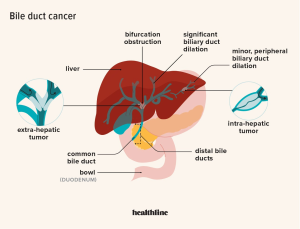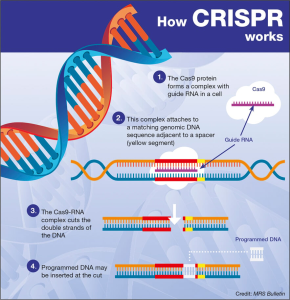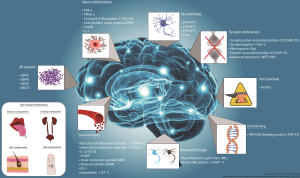
In a remarkable display of innovation and scientific prowess, three Harvard scientists were awarded Breakthrough Prizes in 2025, widely regarded as the ‘Oscars of Science.’ These honors spotlighted significant advancements in pivotal fields, particularly in gene editing advancements, multiple sclerosis research, and GLP-1 treatments, crucial for addressing obesity. Among the distinguished recipients, Dr. Alberto Ascherio’s work on the Epstein-Barr virus has reshaped our understanding of multiple sclerosis, offering new avenues for research into this chronic condition. Meanwhile, Dr. Joel Habener’s contributions to GLP-1 have catalyzed the development of breakthrough therapies for diabetes and obesity, revolutionizing treatment options. Lastly, Dr. David Liu’s pioneering gene editing techniques have not only showcased the potential of modern genetics but also opened doors for innovative solutions to hereditary diseases.
The prestigious Breakthrough Prizes, celebrated for recognizing exceptional contributions in various scientific domains, recently honored three eminent researchers from Harvard University. These scholars are now at the forefront of research tackling critical health issues such as gene editing advancements, the impact of Epstein-Barr virus on multiple sclerosis, and groundbreaking GLP-1 treatments addressing obesity. Their collective work represents a significant leap in understanding complex biological mechanisms, ultimately leading to more effective therapies and potential cures. The acknowledgment of these trailblazers underscores the importance of continued investment and focus in life sciences, aiming to better human health and longevity. As the forefront of scientific inquiry continues to evolve, the achievements of these Harvard scientists illuminate a path toward future breakthroughs.
Groundbreaking Discoveries in Multiple Sclerosis Research
Recent advancements in research have significantly changed the understanding of multiple sclerosis (MS). A key figure in this realm is Alberto Ascherio, who has made strides in establishing the Epstein-Barr virus (EBV) as a primary contributor to MS. The findings from his extensive study of over 10 million U.S. soldiers underline EBV’s critical role in the disease’s onset, transforming how the medical community perceives MS and its potential treatments. With MS affecting millions globally and existing treatments largely focused on symptom management, Ascherio’s work opens new avenues for preventive strategies, including potential vaccines targeting EBV.
The implications of this breakthrough extend beyond scientific recognition; it represents hope for the estimated 2.9 million individuals affected by MS, as well as the broader medical community. By pinpointing a viral catalyst, researchers can now focus on developing targeted therapies and possibly curative interventions. As awareness grows, innovations stemming from this research may lead to an era where MS is no longer a life-altering diagnosis, but rather a manageable condition thanks to early intervention and treatment.
The Role of GLP-1 Treatments in Diabetes and Obesity
The recognition of Joel Habener for his contributions to the discovery of glucagon-like peptide-1 (GLP-1) emphasizes the significant strides taken in understanding metabolic diseases. GLP-1 plays an essential role in regulating blood sugar levels, appetite, and overall digestion, making it a pivotal hormone in combating Type 2 diabetes and obesity. This hormonal pathway has been intricately studied, leading to the development of innovative treatments that harness GLP-1’s properties to improve patient outcomes. A focus on GLP-1 drugs has not only revolutionized diabetes management but has also provided new strategies for weight loss, showcasing the connectedness of these health challenges.
Moreover, GLP-1 treatments exemplify the importance of hormonal balance in maintaining health. These medications work by enhancing insulin secretion and reducing glucagon levels after meals, effectively managing hyperglycemia. As research continues to evolve, the potential for GLP-1-based therapies to play a transformative role in both obesity and metabolic control becomes increasingly apparent, highlighting a sustainable approach to public health and wellness. The ongoing development of these treatments reflects a promising future in weight management and metabolic health.
Innovations in Gene Editing: Base and Prime Editing
David Liu’s recognition for his groundbreaking work in gene editing through base editing and prime editing showcases a new era of genetic research. These technologies are set to revolutionize treatment for genetic disorders by allowing precise edits to DNA, potentially correcting mutations that cause diseases. Base editing, introduced in 2016, has already shown efficacy in clinical settings, proving the practical benefits of Liu’s innovative work. The potential applications of these techniques could usher in a new age where genetic diseases are managed more effectively, with tailored treatments addressing the root causes.
Furthermore, prime editing represents a significant leap forward, as it allows for more extensive changes to the genome, including larger insertions and deletions. This broadens the scope for possible treatments and the investigation of genetic conditions that were previously deemed untreatable. As clinical trials progress, the collaboration among researchers in exploring these technologies continues to evolve, and their implications for gene therapy and personalized medicine are profound. Through Liu’s contributions, there lies a hopeful trajectory toward a future where genetic editing leads to functional cures.
The Impact of Breakthrough Prizes on Scientific Research
The Breakthrough Prizes serve as a catalyst for scientific innovation by recognizing remarkable contributions in life sciences, physics, and mathematics. The honor bestowed upon Harvard scientists Alberto Ascherio, Joel Habener, and David Liu not only acknowledges their individual achievements but also highlights the collaborative nature of scientific progress. By shining a light on groundbreaking research, the Breakthrough Prizes inspire emerging scientists and encourage investment in vital research areas such as multiple sclerosis, diabetes, and gene therapy.
Moreover, the visibility that comes from such accolades plays a crucial role in securing funding for further research endeavors. A prize-winning project can attract attention from both academic and private sectors, fostering an environment where scientists have the resources necessary to continue their work. This ongoing support is essential for advancing knowledge in critical areas, ultimately leading to new discoveries that benefit society at large. The ripple effects of recognition from Breakthrough Prizes underscore the importance of rewarding innovation and collaboration in scientific research.
Future Directions in Multiple Sclerosis Treatments
Following groundbreaking discoveries linking the Epstein-Barr virus to multiple sclerosis, the direction of future research is promising. As efforts to develop vaccines and therapies targeting EBV intensify, the potential for preventative measures in MS becomes tangible. This shift is crucial as current MS treatments focus primarily on managing symptoms rather than addressing underlying causes. The next few years may witness a significant evolution in how multiple sclerosis is treated, with an emphasis on early intervention and targeted therapies.
Furthermore, ongoing studies that emerge from Ascherio’s findings may pave the way for new diagnostic tools that can identify individuals at higher risk of developing MS, based on their EBV infection status. By improving early detection and preventive strategies, we may see a decrease in MS incidence, fundamentally altering the disease’s landscape. This forward-thinking approach can also stimulate further research into other neurodegenerative conditions influenced by viral infections, expanding the scope of virology in neurological health.
Advancements in GLP-1 Research and Its Applications
The advancements in GLP-1 research mark a pivotal moment in the treatment landscape for metabolic diseases. With Harvard’s Joel Habener at the forefront, the development of GLP-1-based therapies holds promise not only in managing Type 2 diabetes but also in addressing obesity—a crisis that affects millions. As more research articulates the mechanisms through which GLP-1 functions, we can expect an evolution of treatment options that exploit this hormone’s beneficial properties.
Additionally, the favorable safety profile and efficacy of GLP-1 treatments have encouraged both clinicians and patients to embrace these innovations, leading to substantial improvements in patient health outcomes. Continued clinical trials and research into this area will likely yield enhanced formulations that may help in securing weight loss and controlling blood sugar levels simultaneously. This multifaceted approach truly embodies the spirit of innovation in modern medicine.
The Interconnectedness of Genetic Research and Disease Treatment
Diving deeper into the world of genetics, the innovations brought forth by David Liu in gene editing technologies like base and prime editing underscore the interconnected nature of genetic research and disease management. By correcting genetic mutations that lead to debilitating diseases, this research is paving the way for a future where genetic predispositions no longer determine health outcomes. Liu’s work represents a shift from traditional methods of disease management to an approach grounded in genetic precision, fundamentally transforming the concept of treatment.
Moreover, as scientists continue to explore the vast potential of gene editing, an integrated understanding of gene therapy alongside advancements in areas like GLP-1 treatments and multiple sclerosis research can create synergies leading to comprehensive care solutions. By incorporating insights from various scientific fields, researchers and clinicians can better address the multifactorial nature of diseases, demonstrating that holistic treatment strategies will play a crucial role in advancing healthcare.
Potential Trends in Breakthrough Research Areas
As we look forward to future Breakthrough Prizes, certain trends in research areas are likely to emerge, particularly in fields relevant to today’s pressing health challenges. With rising health concerns such as obesity and autoimmune diseases like multiple sclerosis, research prioritizing these issues is expected to gain momentum. Scientists are increasingly focusing on not just identifying diseases but also innovating preventive strategies and treatments that address root causes—an approach exemplified by the pioneering work of researchers honored in recent years.
In the realm of gene editing and metabolic research, there is potential for interdisciplinary projects that combine elements of virology, endocrinology, and genetic engineering. As demonstrated by the achievements of Ascherio, Habener, and Liu, the ability to collaborate across domains will be instrumental in tackling complex health problems, potentially leading to breakthroughs that could reshape our understanding of disease pathophysiology.
Why Recognizing Scientific Achievement Matters
Recognizing scientific achievements through prestigious awards like the Breakthrough Prizes not only honors the contributions of individual researchers but also fosters a culture of excellence in the scientific community. It underscores the vital role that sustained research efforts play in advancing human knowledge and improving health outcomes. Awards serve to incentivize innovation, encouraging scientists to persist in their endeavors even amidst challenges and setbacks that are common in rigorous research settings.
Moreover, public acknowledgment helps bridge the gap between scientific research and societal perception. By bringing attention to significant breakthroughs, such as the linkage between Epstein-Barr virus and MS, or the revolutionary GLP-1 treatments, these prizes can enhance public understanding and support for science. As society becomes more informed about scientific progress and its implications, there will likely be increased public and private investment in research, driving further advancements that can significantly improve lives.
Frequently Asked Questions
What are the 2025 Breakthrough Prizes awarded to Harvard scientists?
In 2025, three Harvard scientists received Breakthrough Prizes for their groundbreaking work. Alberto Ascherio was recognized for establishing the Epstein-Barr virus as the primary cause of multiple sclerosis, Joel Habener contributed to the discovery of the GLP-1 hormone leading to new obesity treatments, and David Liu was honored for developing advanced gene editing technologies like base editing and prime editing.
How does Epstein-Barr virus relate to multiple sclerosis research?
Alberto Ascherio’s research demonstrated that Epstein-Barr virus infection significantly increases the risk of developing multiple sclerosis. This finding is a major breakthrough in MS research, establishing a concrete link between the virus and the disease, and fueling ongoing vaccine and antibody drug developments against EBV.
What is GLP-1 and its significance in obesity treatments?
GLP-1, or glucagon-like peptide-1, is a hormone that plays a crucial role in regulating blood sugar and appetite. Joel Habener’s discoveries surrounding GLP-1 led to the development of new treatments for Type 2 diabetes and obesity, representing significant advancement in addressing these widespread health issues.
What are the advancements in gene editing recognized by the Breakthrough Prizes?
David Liu’s work in gene editing, particularly the technologies of base editing and prime editing, was recognized with a 2025 Breakthrough Prize. These innovative methods allow for precise corrections of genetic mutations, with ongoing clinical trials showing promising results for various genetic diseases.
What impact do the Breakthrough Prizes have on scientific research?
The Breakthrough Prizes, often referred to as the ‘Oscars of Science,’ shine a spotlight on significant scientific achievements, such as the work of Harvard scientists on Epstein-Barr virus and gene editing. This recognition not only validates the groundbreaking work but also encourages further research and funding in these critical areas.
How are Harvard scientists contributing to advancements in health through the Breakthrough Prizes?
The recent Breakthrough Prizes awarded to Harvard scientists highlight their crucial contributions to health. Ascherio’s MS research, Habener’s GLP-1 advancements, and Liu’s gene editing techniques are foundational to solving major health issues, paving the way for innovative treatments and therapies.
What is the significance of base editing in genetic disease treatment?
Base editing, developed by David Liu, allows for precise corrections of disease-causing mutations in DNA. Recognized by the Breakthrough Prizes, this technique has potential life-changing applications in treating many genetic diseases, with several clinical trials already demonstrating its effectiveness.
| Scientist | Institution | Award Contribution | Impact |
|---|---|---|---|
| Alberto Ascherio | Harvard T.H. Chan School of Public Health / Harvard Medical School | Identified Epstein-Barr virus as the leading cause of multiple sclerosis (MS) | First compelling evidence of a cause for MS; vaccine and antibody drugs in development. |
| Joel Habener | Harvard Medical School | Contributed to the discovery of glucagon-like peptide-1 (GLP-1) | GLP-1 drugs have revolutionized treatment for Type 2 diabetes and obesity. |
| David Liu | Broad Institute / Harvard University | Developed base editing and prime editing platforms | Corrected disease-causing mutations in patients; used in multiple clinical trials. |
Summary
Harvard scientists Breakthrough Prizes have been awarded to three leading researchers who made significant advances in their respective fields. Alberto Ascherio’s groundbreaking work on Epstein-Barr virus and its connection to multiple sclerosis has paved the way for potential treatments and a deeper understanding of the disease. Meanwhile, Joel Habener’s research on GLP-1 has transformed how Type 2 diabetes and obesity are managed with innovative drug therapies. Lastly, David Liu’s advancements in gene editing technologies hold the promise of correcting genetic diseases, showcasing the incredible potential of modern science to improve human health. Together, these achievements not only highlight the importance of research but also the impact of collaboration in the scientific community.



